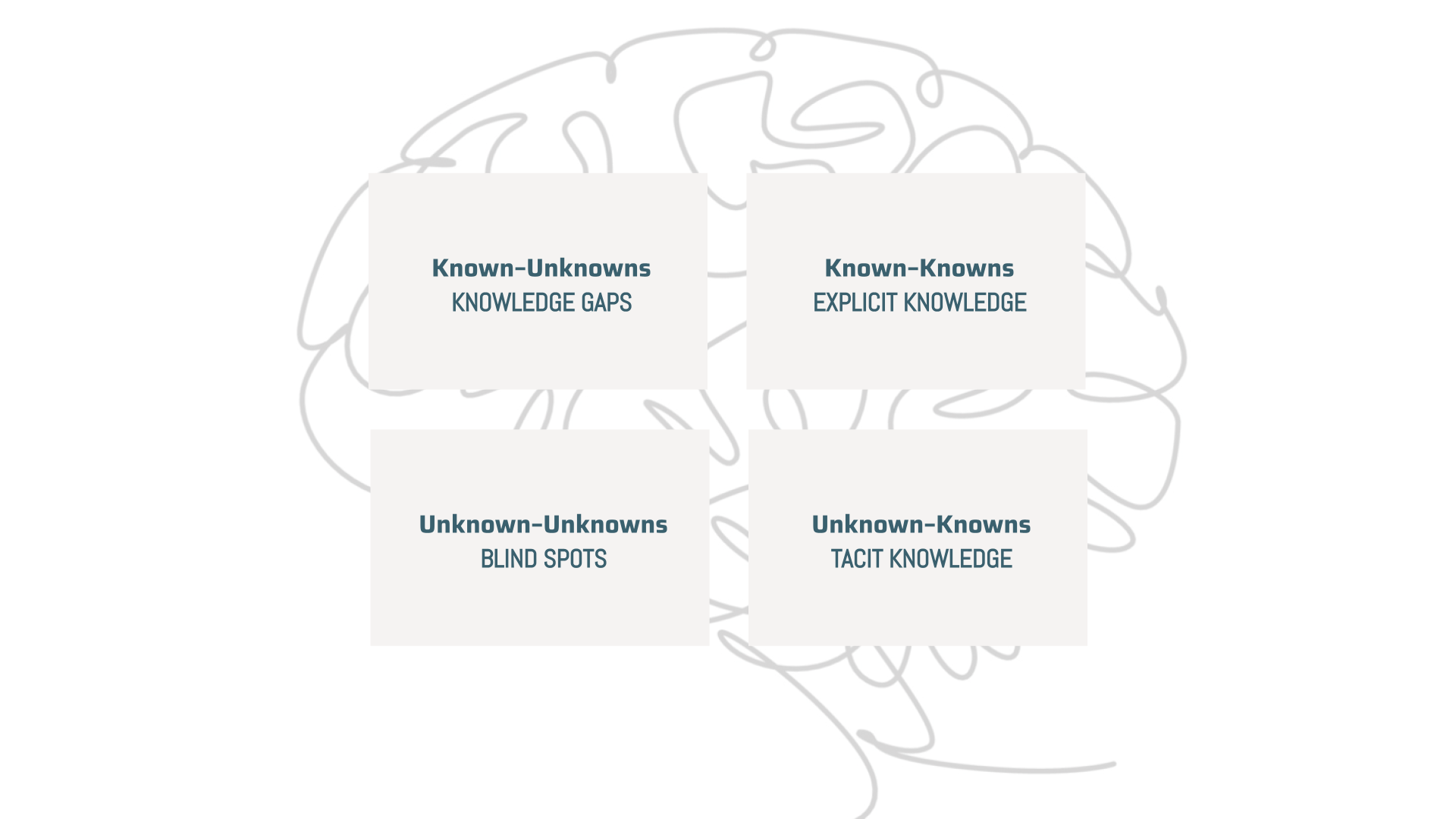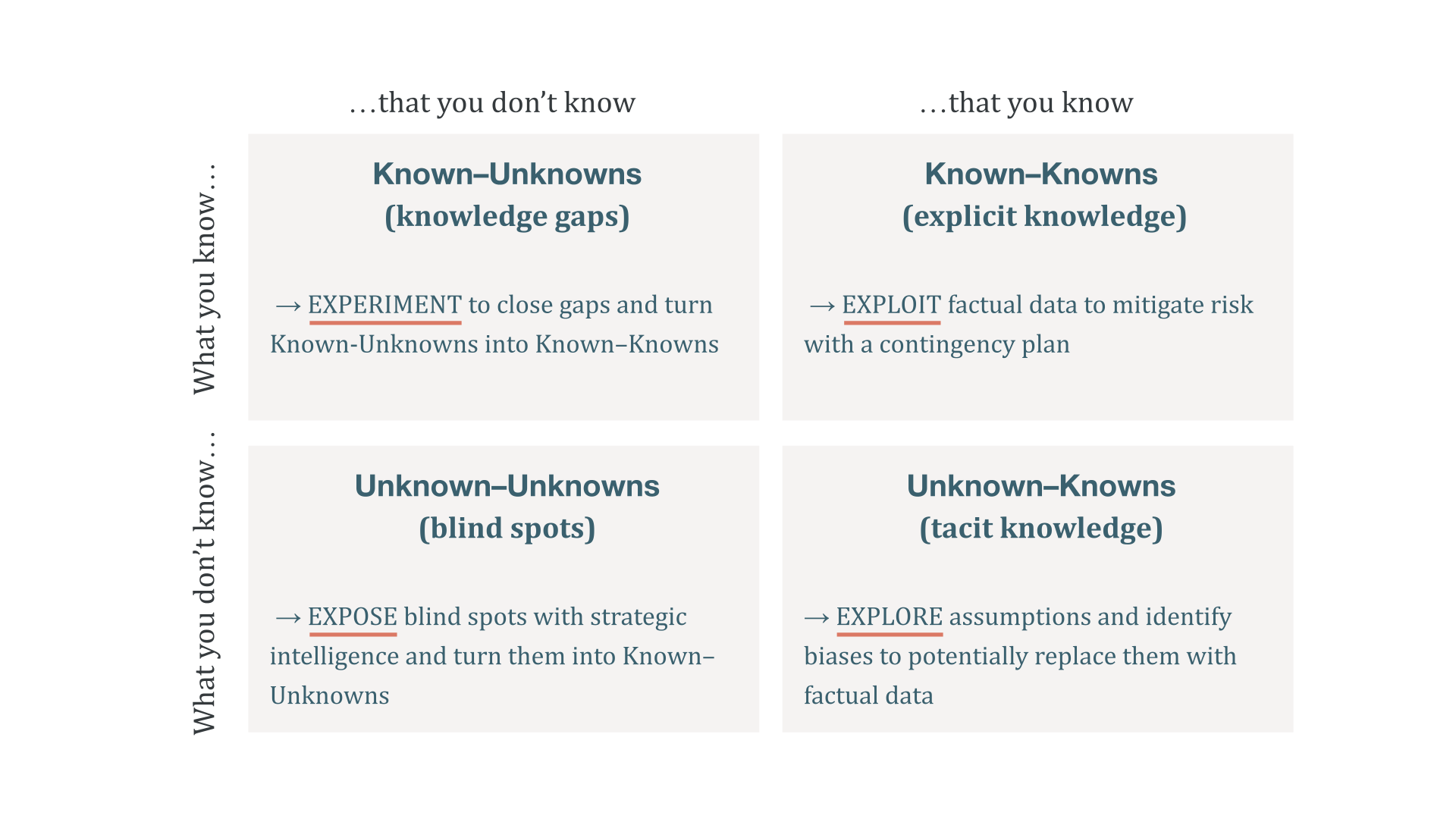Author:: [[Anne-Laure Le Cunff]]
DateFinished::
URL:: https://nesslabs.com/uncertain-mind
Rating::
Tags:: # The Uncertain Mind: How the Brain Handles the Unknown

## Highlights
In fact, fear of the unknown has been [theorized](https://www.sciencedirect.com/science/article/pii/S0887618516300469#bib0770) to be the “one fear to rule them all”—the fear that gives rises to all other fears ([View Highlight](https://read.readwise.io/read/01gjb5vvn7kf4zdem9ta9w5whz))
uncertainty disrupts many of automatic cognitive processes that govern routine action ([View Highlight](https://read.readwise.io/read/01gjb5xzf3xdwg7pf7nrgh0e74))
- Note: Uncertainty can take many shapes. It can be fear inducing and scary but it can also be surprising in a humorific way. It’s all about the context and situation that shape it into what it is. I think we have to define negative uncertainty because their is always uncertainty in creative acts. But it can help the creative act rather than inhibit it.
When we feel uncertain about the future, doubt takes over our mind, making it difficult to think about anything else ([View Highlight](https://read.readwise.io/read/01gjb5zgv8jm8ffed48k6chwse))
[[Uncertain situations force us to use additional working memory resources]]
Our working memory capacity is limited. Cognitive load is the amount of working memory resources we use at one given time. A high cognitive load means that we’re using a lot of our working memory resources. And uncertain situations force us to use additional working memory resources ([View Highlight](https://read.readwise.io/read/01gjb60jresbjw9f74z37a9hhe))
- Note: This is why it’s so hard to think or do highly cognitive tasks while heavily uncertain.
[[Using thinking tools we can offload the burden uncertainty places on our mind]]
By using [thinking tools](https://toolbox.nesslabs.com/), we can offload some of the burden uncertainty puts on our mind, so we can regain control of our attention and free our working memory resources ([View Highlight](https://read.readwise.io/read/01gjb697vhfp7q7ytktebsxaty))
- Note: This reminds me of my note on anxiety often being an emotion signaling we should change something in our behavior. It’s something we should listen to.
uncertainty is multifaceted, with many flavors that should be treated differently. ([View Highlight](https://read.readwise.io/read/01gjb63w54qstwpjr0qye7d6cv))
The matrix consists of four quadrants: Known-Knowns, Known-Unknowns, Unknown-Knowns, and Unknowns-Unknowns ([View Highlight](https://read.readwise.io/read/01gjb67pg7h8pb429fmxvzcvyy))
 ([View Highlight](https://read.readwise.io/read/01gjb67jrkc4etbn90dx1heep0))
**Known-Knowns** are uncertainties that are known to us, and that we can plan for. For example, if we know that there is a high possibility of a layoff at our company, we can make a plan for how to deal with it. ([View Highlight](https://read.readwise.io/read/01gjb67scx2k61tv2dwtwnwx8a))
**Known-Unknowns** are uncertainties that we know exist, but where we don’t have enough knowledge to make a plan. ([View Highlight](https://read.readwise.io/read/01gjb67wzrma5bznn0p9a9kzf1))
**Unknown-Knowns** are uncertainties that we’re not aware of but that we tacitly understand, which may lead to biases and assumptions in our decisions. Hidden facts ([View Highlight](https://read.readwise.io/read/01gjb681p99s3gcrwbwvs4vwmd))
**Unknowns-Unknowns** are uncertainties that we don’t know about. ([View Highlight](https://read.readwise.io/read/01gjb689e8q89t1k7bs73r47v3))
 ([View Highlight](https://read.readwise.io/read/01gjb68dbk5x1wzdn3scb9yemb))
Author:: [[Anne-Laure Le Cunff]]
DateFinished::
URL:: https://nesslabs.com/uncertain-mind
Rating::
Tags:: #📩 #🟥 # The Uncertain Mind: How the Brain Handles the Unknown

## Highlights
In fact, fear of the unknown has been [theorized](https://www.sciencedirect.com/science/article/pii/S0887618516300469#bib0770) to be the “one fear to rule them all”—the fear that gives rises to all other fears ([View Highlight](https://read.readwise.io/read/01gjb5vvn7kf4zdem9ta9w5whz))
uncertainty disrupts many of automatic cognitive processes that govern routine action ([View Highlight](https://read.readwise.io/read/01gjb5xzf3xdwg7pf7nrgh0e74))
- Note: Uncertainty can take many shapes. It can be fear inducing and scary but it can also be surprising in a humorific way. It’s all about the context and situation that shape it into what it is. I think we have to define negative uncertainty because their is always uncertainty in creative acts. But it can help the creative act rather than inhibit it.
When we feel uncertain about the future, doubt takes over our mind, making it difficult to think about anything else ([View Highlight](https://read.readwise.io/read/01gjb5zgv8jm8ffed48k6chwse))
Our working memory capacity is limited. Cognitive load is the amount of working memory resources we use at one given time. A high cognitive load means that we’re using a lot of our working memory resources. And uncertain situations force us to use additional working memory resources ([View Highlight](https://read.readwise.io/read/01gjb60jresbjw9f74z37a9hhe))
- Note: This is why it’s so hard to think or do highly cognitive tasks while heavily uncertain.
By using [thinking tools](https://toolbox.nesslabs.com/), we can offload some of the burden uncertainty puts on our mind, so we can regain control of our attention and free our working memory resources ([View Highlight](https://read.readwise.io/read/01gjb697vhfp7q7ytktebsxaty))
- Note: This reminds me of my note on anxiety often being an emotion signaling we should change something in our behavior. It’s something we should listen to.
uncertainty is multifaceted, with many flavors that should be treated differently. ([View Highlight](https://read.readwise.io/read/01gjb63w54qstwpjr0qye7d6cv))
The matrix consists of four quadrants: Known-Knowns, Known-Unknowns, Unknown-Knowns, and Unknowns-Unknowns ([View Highlight](https://read.readwise.io/read/01gjb67pg7h8pb429fmxvzcvyy))
 ([View Highlight](https://read.readwise.io/read/01gjb67jrkc4etbn90dx1heep0))
**Known-Knowns** are uncertainties that are known to us, and that we can plan for. For example, if we know that there is a high possibility of a layoff at our company, we can make a plan for how to deal with it. ([View Highlight](https://read.readwise.io/read/01gjb67scx2k61tv2dwtwnwx8a))
**Known-Unknowns** are uncertainties that we know exist, but where we don’t have enough knowledge to make a plan. ([View Highlight](https://read.readwise.io/read/01gjb67wzrma5bznn0p9a9kzf1))
**Unknown-Knowns** are uncertainties that we’re not aware of but that we tacitly understand, which may lead to biases and assumptions in our decisions. Hidden facts ([View Highlight](https://read.readwise.io/read/01gjb681p99s3gcrwbwvs4vwmd))
**Unknowns-Unknowns** are uncertainties that we don’t know about. ([View Highlight](https://read.readwise.io/read/01gjb689e8q89t1k7bs73r47v3))
 ([View Highlight](https://read.readwise.io/read/01gjb68dbk5x1wzdn3scb9yemb))